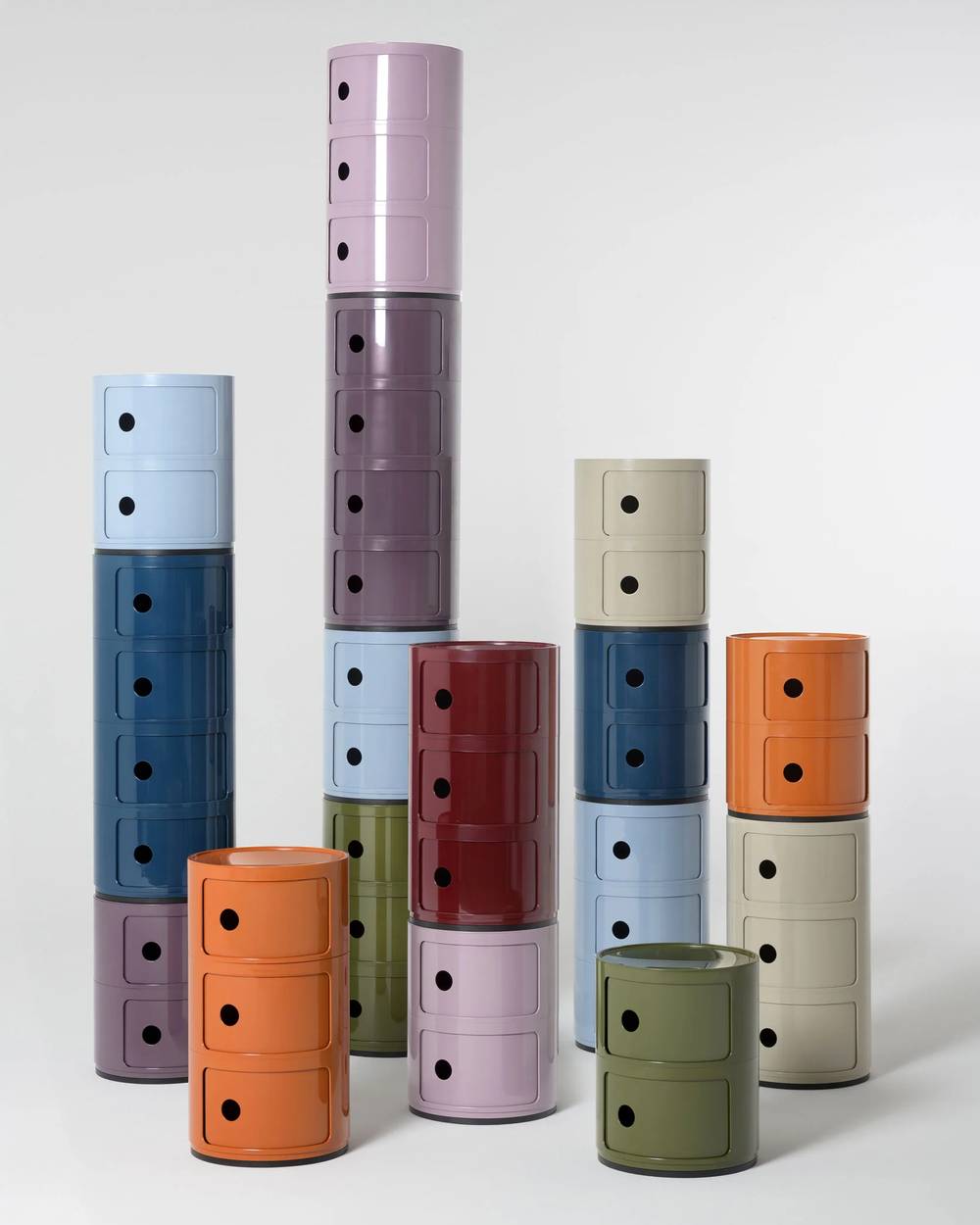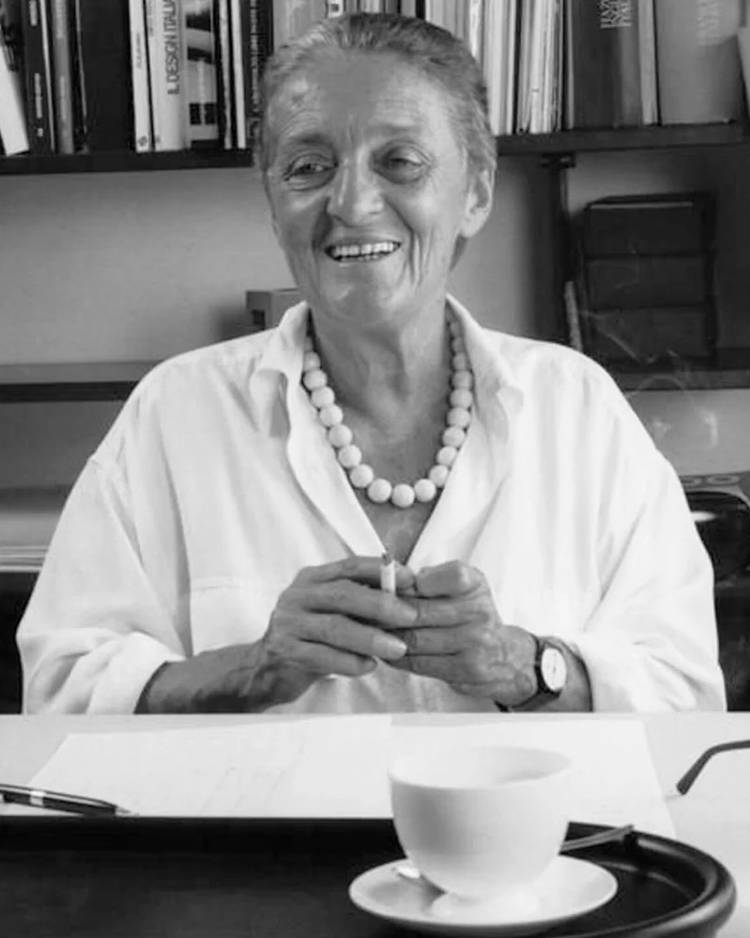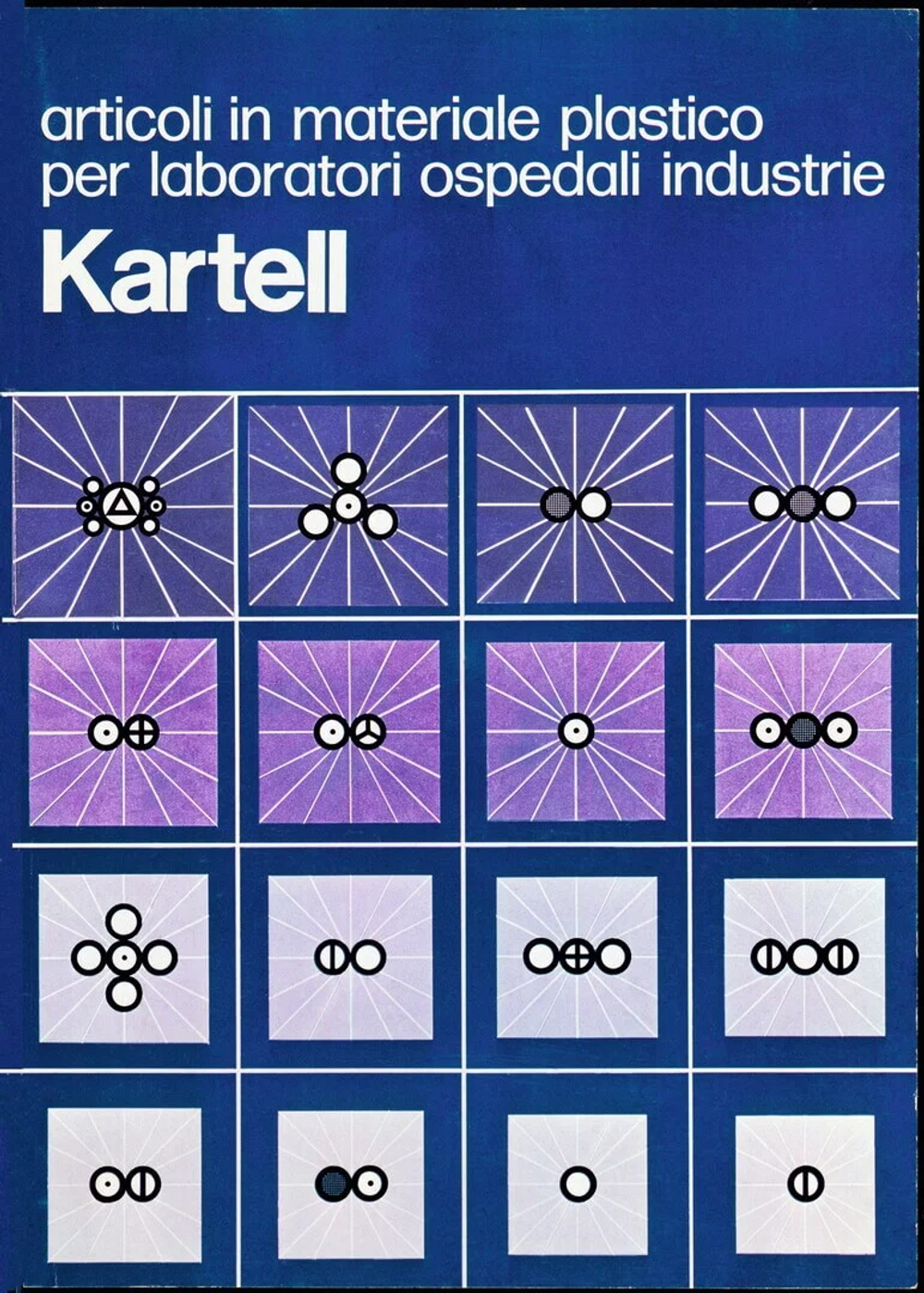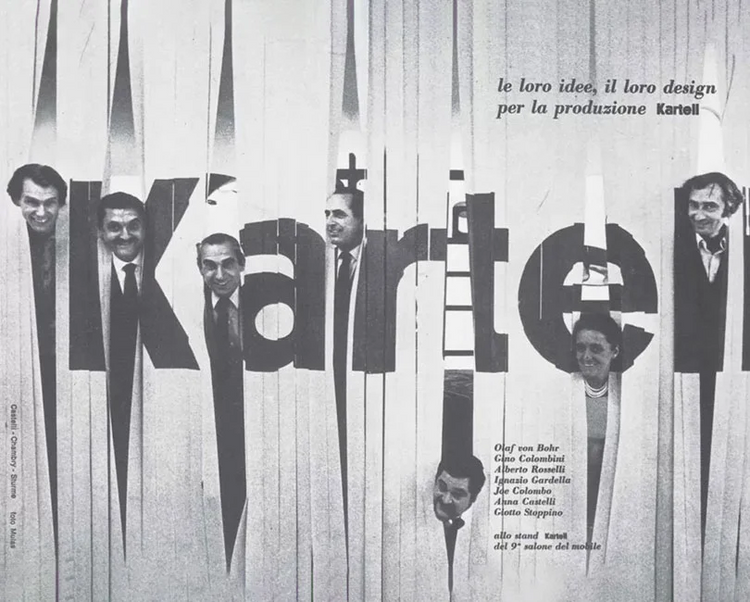Kartell • COMPONIBILI
Storage unit
Thermoplastic technopolymer (ABS) with glossy finish. Designed by Anna Castelli Ferrieri. Kartell edition.
REF. 93207
Diam.32 x H.40cm
In Stock
Componibili first appeared in 1967 and have become a timeless furnishing classic.
The modular elements were designed to meet different needs and to fit perfectly into every room in the home. Today’s Componibili are 32 cm in diameter. Thanks to fixed compositions of two, three or four elements, these products are both functional and practical in all environments.

Anna Castelli Ferrieri is an Italian architect and designer, the wife of Giulio Castelli, Kartell's founder. A student of Franco Albini and Ignazio Gardella, she is a key figure in the history of Kartell. Born in Milan in 1918, she was one of the first women to graduate from Milan's renowned Polytechnic Institute. She worked for the company as a designer in the Kartell studio and as design director, contributing to Kartell's collaboration with Joe Colombo, Marco Zanusso and Achille Castigliani. The rationality of the projects she designs is responsible for staging the relationships between objects in a framework that is constantly striving to optimise space, but also the cost-performance ratio. The use of plastic as a material for constant experimentation allows her to think of mass-produced products that are accessible to all, and that can also be stacked and stored easily.
Anna Castelli Ferrieri received numerous design awards, including the famous Compasso de Oro, but the fact that most of her pieces are still in production is the highest praise of all. She died in Milan in 2006, leaving behind a code for designing objects that is still used by most designers today: To combine the useful with the pleasurable.

Founded by Giulio Castelli in 1949, in the early years Kartell took its first steps to produce the distinctive design that would come to epitomise the 'Made in Italy’ label.
In 1988 the company was acquired by Claudio Luti, who sought collaborations with designers and architects like Philippe Starck, Ron Arad, Antonio Citterio, Ferruccio Laviani, Piero Lissoni, Patricia Urquiola, Mario Bellini, Alberto Meda and Vico Magistretti, who were responsible for those products that soon came to symbolise the brand.
The fresh approach to materials dictated the new direction and brought real turning points for Kartell: studying, manipulating and enriching materials resulted in an end product which offered unprecedented characteristics.

The turning point came when, after years of research and thanks to a revolutionary innovation, in 1999 Kartell became the first company in the world to use polycarbonate to produce furnishing items. From this moment on, the company developed and explored the theme of transparency that has made it unique and original.
The continuous research of new shapes and surfaces, sustained from the beginning by the use of new technologies and high-performance materials, have made it possible to create products like nothing ever created before.




